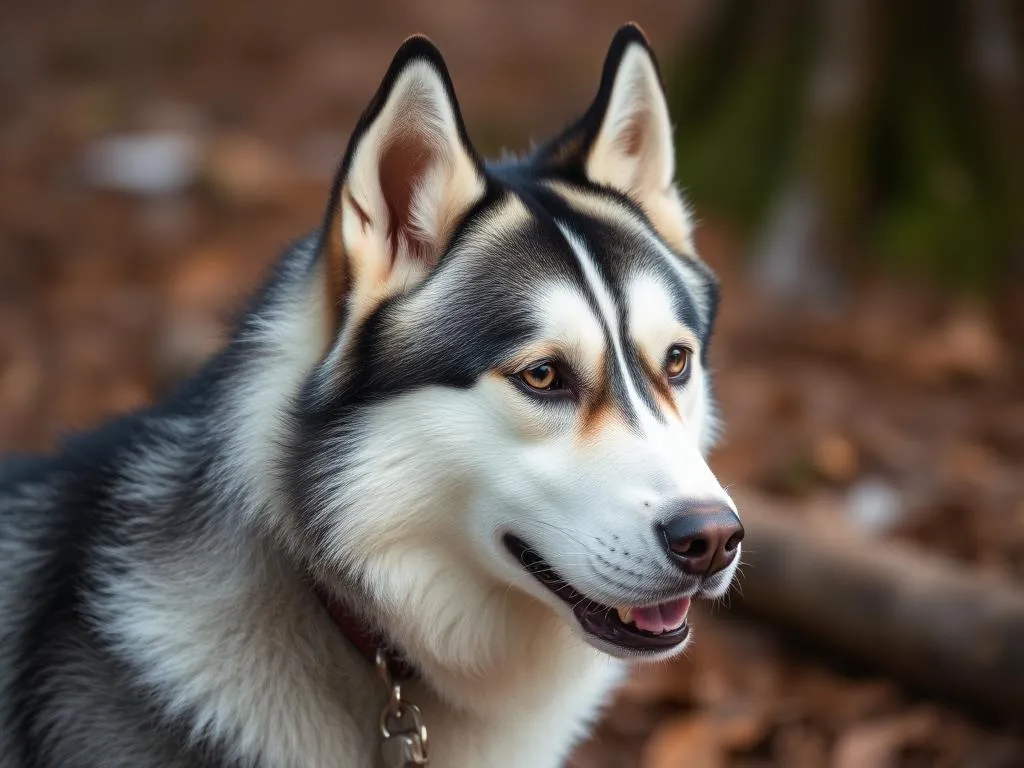
Siberian Huskies are one of the most captivating dog breeds, known for their striking appearance and energetic demeanor. However, a plethora of Siberian Husky myths and misconceptions often clouds the judgment of potential owners and dog enthusiasts alike. Understanding the truth about these remarkable dogs is crucial for anyone considering bringing a Husky into their home. Let’s explore the realities of the Siberian Husky and debunk some of the common myths surrounding this breed.
Understanding the Siberian Husky
Breed History
The Siberian Husky originated in Siberia, where the Chukchi people bred them for their incredible stamina and strength. These dogs were essential for pulling sleds across long distances in harsh Arctic conditions, serving as both work animals and companions. Their history is steeped in survival, making them resilient and hardy dogs that thrive in cold climates.
Physical Characteristics
Siberian Huskies are medium-sized dogs, typically weighing between 35 to 60 pounds, with males generally larger than females. They have a double coat that can vary in color from black to red or agouti, often with striking markings. One of their most distinctive features is their eyes; while many Huskies have blue eyes, some may have brown, green, or even one of each, a condition known as heterochromia. Their erect triangular ears and bushy tail add to their unique appearance.
Temperament and Behavior
Huskies are known for their friendly and energetic personalities. They are social animals that thrive in a family setting and often get along well with children and other pets. Their playful nature makes them a joy to have around, but their high energy levels require an active lifestyle. Understanding their temperament is essential for prospective owners to ensure a good fit within their family dynamics.
Common Myths About Siberian Huskies
Myth: Huskies are Aggressive Dogs
One of the most prevalent Siberian Husky myths and misconceptions is the belief that they are aggressive. This misconception likely arises from their strong-willed nature and high energy levels. In reality, Huskies are generally friendly and sociable dogs. They are not known for being aggressive toward humans or other animals, especially when properly socialized from a young age. Compared to other breeds, such as Rottweilers or Doberman Pinschers, Huskies are more playful than aggressive.
Myth: Huskies Can’t be Trained
Another common myth is that Huskies are difficult to train. While they can be independent and sometimes stubborn, this does not mean they cannot be trained. In fact, Huskies are intelligent dogs that respond well to positive reinforcement techniques. Effective training strategies involve consistency, patience, and keeping training sessions fun and engaging. Utilizing games and rewards makes training more enjoyable for both the dog and the owner.
Myth: All Huskies Have Blue Eyes
While many people associate Huskies with their striking blue eyes, not all Huskies share this trait. Eye color can vary significantly among the breed due to genetic factors. Some Huskies have brown, green, or amber eyes, and others may have one blue and one brown eye. This variation adds to the charm of the breed and dispels the myth that all Huskies must have blue eyes.
Myth: Huskies are a One-Person Dog
Contrary to the belief that Huskies form a strong bond with only one person, they are actually pack-oriented animals. They thrive on social interaction and enjoy being part of a family unit. Huskies can bond with multiple family members and often display affection for everyone in the household. Their sociable nature makes them excellent companions for families with children and other pets.
Misconceptions Related to Care and Maintenance
Grooming Needs
A common misconception about Huskies is that they do not require much grooming. In reality, they have a thick double coat that sheds heavily, particularly during seasonal changes. Regular brushing, at least a couple of times a week, is essential to manage shedding and keep their coat healthy. During shedding season, which occurs in spring and fall, daily brushing may be necessary to keep loose fur under control.
Exercise Requirements
Another myth is that Huskies do not need much exercise. On the contrary, Huskies are highly energetic breeds that require significant physical activity to stay healthy and happy. Simply letting them outside in the yard is often insufficient. Daily walks, runs, and play sessions are essential to meet their exercise needs. Engaging them in activities like agility training or participating in dog sports can also help channel their energy positively.
Dietary Needs
Many potential Husky owners misunderstand their dietary needs. Huskies do not have a significantly different diet compared to other breeds, but their nutritional requirements may vary based on their activity level, age, and health status. High-quality dog food that meets their specific needs is essential, and consulting with a veterinarian for tailored advice can help ensure optimal health.
Behavioral Misunderstandings
Howling as a Problem
Huskies are known for their vocalizations, particularly howling. Some people mistakenly view howling as a behavior problem. However, howling is a natural form of communication for Huskies, rooted in their ancestry as sled dogs. They may howl to express excitement, communicate with their pack, or even get attention. Understanding this behavior is crucial for Husky owners, as it can help them appreciate their dog’s unique way of communicating.
The Escape Artist Reputation
Siberian Huskies have earned a reputation as escape artists, which can lead to concerns about their behavior. This reputation stems from their curious nature and high intelligence. Huskies are driven to explore their surroundings and may attempt to escape if they feel bored or unfulfilled. To prevent escapes, owners should ensure their yard is secure and provide plenty of mental and physical stimulation. Activities like puzzle toys and interactive games can help keep their minds engaged.
Realities of Living with a Siberian Husky
Sociability and Interaction with Other Pets
Siberian Huskies are known for their friendly nature, but their compatibility with other pets can vary. While many Huskies get along well with other dogs and animals, some may have a strong prey drive, especially towards smaller pets. Proper introductions and socialization from a young age are vital for fostering positive relationships with other animals. Supervision during interactions can also help ensure everyone gets along.
Impact on Family Life
Huskies can significantly impact family life. Their energetic personalities and love for play make them wonderful companions for active families. However, they also require time, attention, and training. Families with young children should be mindful of their dog’s behavior and ensure that interactions are supervised. Teaching children how to interact with a Husky can foster a loving and respectful relationship.
Lifespan and Health Issues
The average lifespan of a Siberian Husky is around 12 to 15 years. While they are generally healthy dogs, they can be prone to certain health issues, including hip dysplasia, eye problems, and skin conditions. Regular veterinary check-ups, vaccinations, and preventive care are essential for maintaining their health. Being aware of common health issues allows owners to seek timely care and ensure their Husky lives a long, healthy life.
Conclusion
Understanding the Siberian Husky myths and misconceptions is essential for potential owners and dog enthusiasts. These dogs are not aggressive, can be trained effectively, and come in various eye colors. Their social nature makes them great family companions, and their care requirements are often misunderstood. By dispelling these myths and misconceptions, we can foster a better understanding of this remarkable breed and promote responsible ownership. For those considering a Siberian Husky, it is crucial to seek reliable sources of information and be prepared for the joys and challenges that come with sharing life with these incredible dogs.









